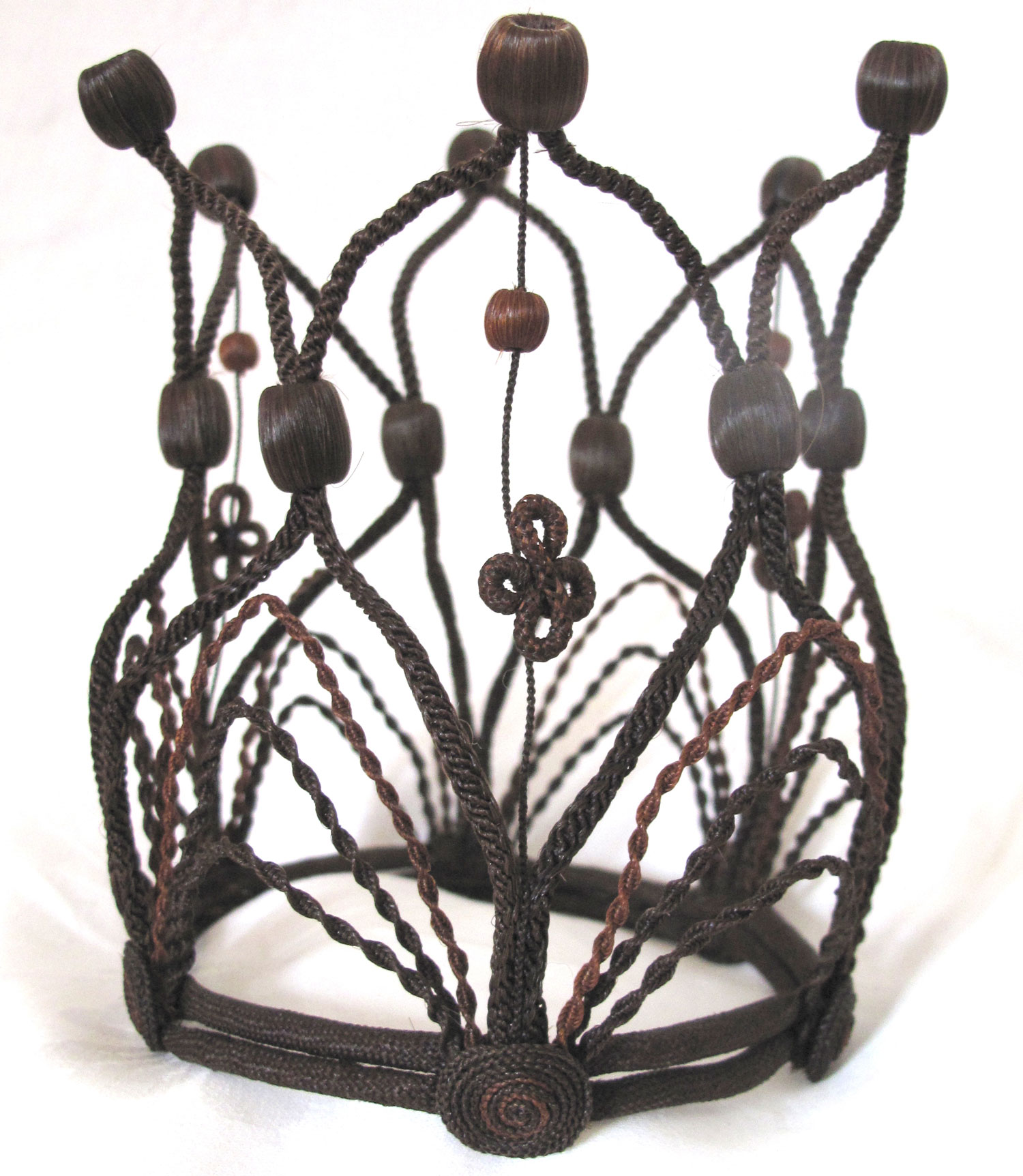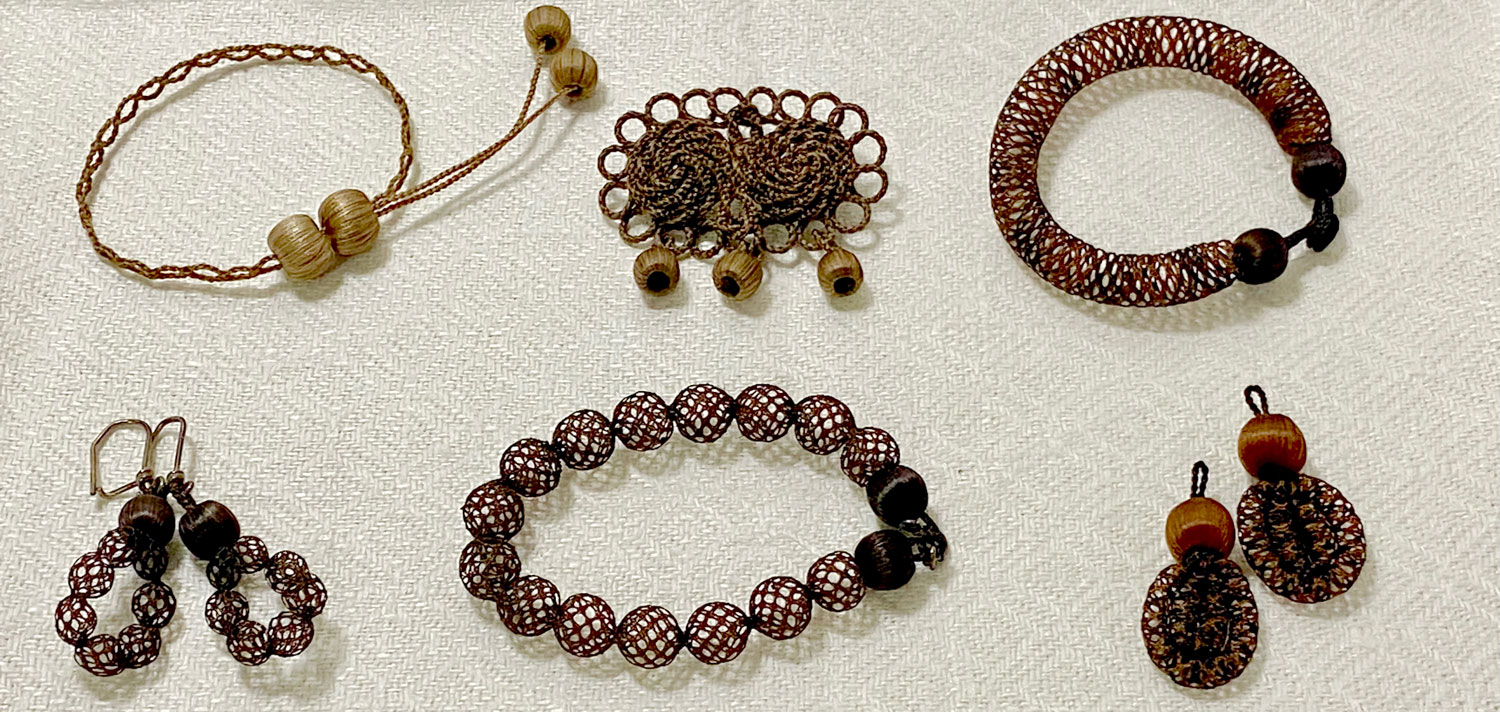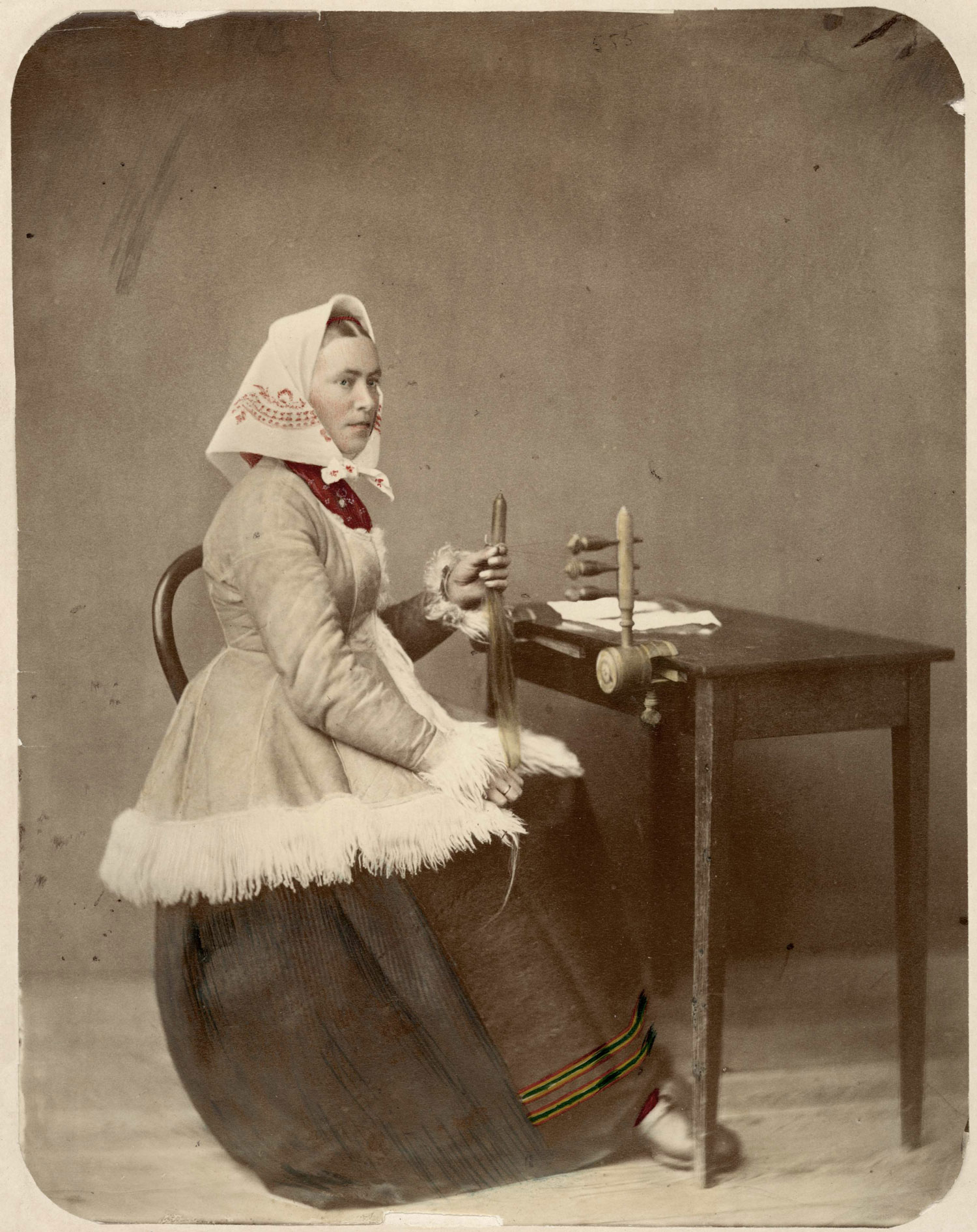- Startpage
- In English
- The Inventory
- Hairwork
Hairwork
Hairwork is a type of jewelry crafted from human hair. The hair is braided or made into lace in various styles, which is arranged into the finished piece of jewelry. Hairwork was widely practiced in Europe and North America during the 19th century.
Location: Dalarna

Photo: Anna Sparr.

Photo: Anna Sparr.
Common pieces of hairwork jewelry include watch chains, bracelets, necklaces, brooches, earrings and rings. The hairwork is mounted with metal frames and locks, or wooden pearls covered by hair. Hairwork is often a deeply personal piece of jewelry, as the hair usually belongs to a loved one.
In Sweden, hairwork is closely associated with the village Våmhus in the province of Dalarna. Women called “hårkullor” dominated the craft. Hårkullor would travel widely to craft and sell hairwork during the late 19th and early 20th centuries. Their travels would take them to different parts of Sweden and other European countries. The widespread craft was a central source of income for the region for long periods of time.
Techniques and tools used when producing rope are similar to those applied to hairwork. The strands of hair are attached to a particular type of stand, on which the hair is braided. Women from Dalarna who traveled with their hairwork commonly used stands that could be disassembled and easily packed. Once the hairwork is completed, it is fixated by putting it in boiling water.
The origins of hairwork are unknown. In France, hairwork was fashionable during the late 18th century, but the craft gained most of its popularity during the 19th century. Hairdressers and wigmakers produced hairwork in many European countries. In the United States, mail order companies would produce hairwork on demand.
Interest in the craft decreased during the first part of the 20th century. Few women in Våmhus had knowledge in hairwork by the 1950’s. In order to safeguard the knowledge and practice of the craft, they started arranging courses in hairwork for interested locals. Today there is a local organization in Våmhus, “Hårnätet”, focused on safeguarding and transmitting the knowledge of hairwork to new generations.

